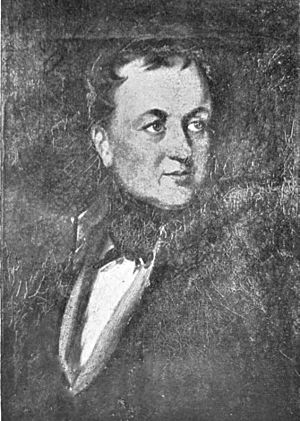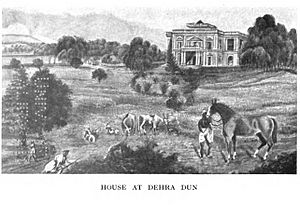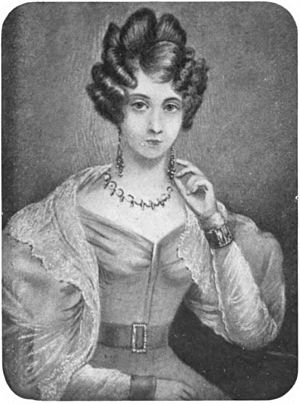Frederick Young (East India Company officer) facts for kids
Frederick Young (born November 30, 1786 – died May 22, 1874) was an army officer from Ireland. He worked for the British East India Company, which was a powerful trading company that also had its own army in India. Young is famous for starting the Sirmoor Battalion, which later became the 2nd King Edward VII's Own Gurkha Rifles (The Sirmoor Rifles). This was the first Gurkha regiment to fight alongside the British.
He also helped create a hunting lodge in Mussoorie with Frederick John Shore. This lodge was the beginning of Mussoorie becoming a British town. Many people see Frederick Young as the person who founded the British settlement in Mussoorie.
Contents
Early Life and Military Career
Frederick Young was born in Green Castle, Moville, in County Donegal, Ireland. His family had lived in the area for a long time and owned land. His father, Rev. Gardiner Young, was a church leader.
Young moved to India when he was just 15 years old. He joined the East India Company army as a young officer called an ensign. He first served under General Lake in central India. He took part in the Second Anglo-Maratha War between 1803 and 1805.
Adventures in Nepal
Young later became an aide-de-camp, which means an assistant, to Sir Robert Rollo Gillespie. He served with Gillespie in Java, an island in Southeast Asia. In 1814, he followed Gillespie to Nepal. Their goal was to take control of the Kathmandu Valley from the Gurkhas.
Sadly, Gillespie was killed during the Battle of Nalapani. He died in Young's arms. After this, General David Ochterlony took command. During the Nepal war, Young was captured by the Gurkhas for a short time. It is said that they respected his bravery.
Young was involved in a successful campaign at Jaithak fort, where the Gurkhas were defeated. He then managed to convince some Gurkha soldiers to join the British army. In 1815, he founded the Sirmoor Regiment at Nahan in Sirmoor State. This was a very important moment.
Rising Through the Ranks
Young was promoted several times. He became a Captain in 1821, a Major in 1826, and a Lieutenant Colonel in 1830. From 1829, he also worked as a government representative for the Dehra Dun area. This place also became the home for his regiment.
Young once said about his regiment, "I came there one man, and I came back three thousand." This shows how proud he was of the soldiers he led. His regiment, which had about 3,000 soldiers, fought in the Third Anglo-Maratha War. They also played a big part in Delhi during the rebellion in 1857.
Young also helped Frederick John Shore in a campaign against a local leader in 1824. Later, in 1849, Young was sent to Darjeeling. He had to prepare for a possible invasion of Sikkim because a botanist named Joseph Hooker was held hostage there.
Life in Mussoorie and Retirement
Frederick Young loved hunting. With Frederick Shore, he built a hunting lodge near Mussoorie on a hill called Camel's Back. This area later grew into an important British town in the hills. Young built his own home in Mussoorie, which he named “Mullingar” after a place in Ireland.
He also brought tea and potato farming to the region. Young retired from the army in 1854 as a Major General. He was promoted to General in 1865. He then moved back to Ireland and lived in Fairy Hill, Bray.
In 1825, he married Jeanette Jamesina. They had eight children together. Jeanette passed away in 1852. Frederick Young died at his home in Dublin when he was 88 years old.
Other sources





